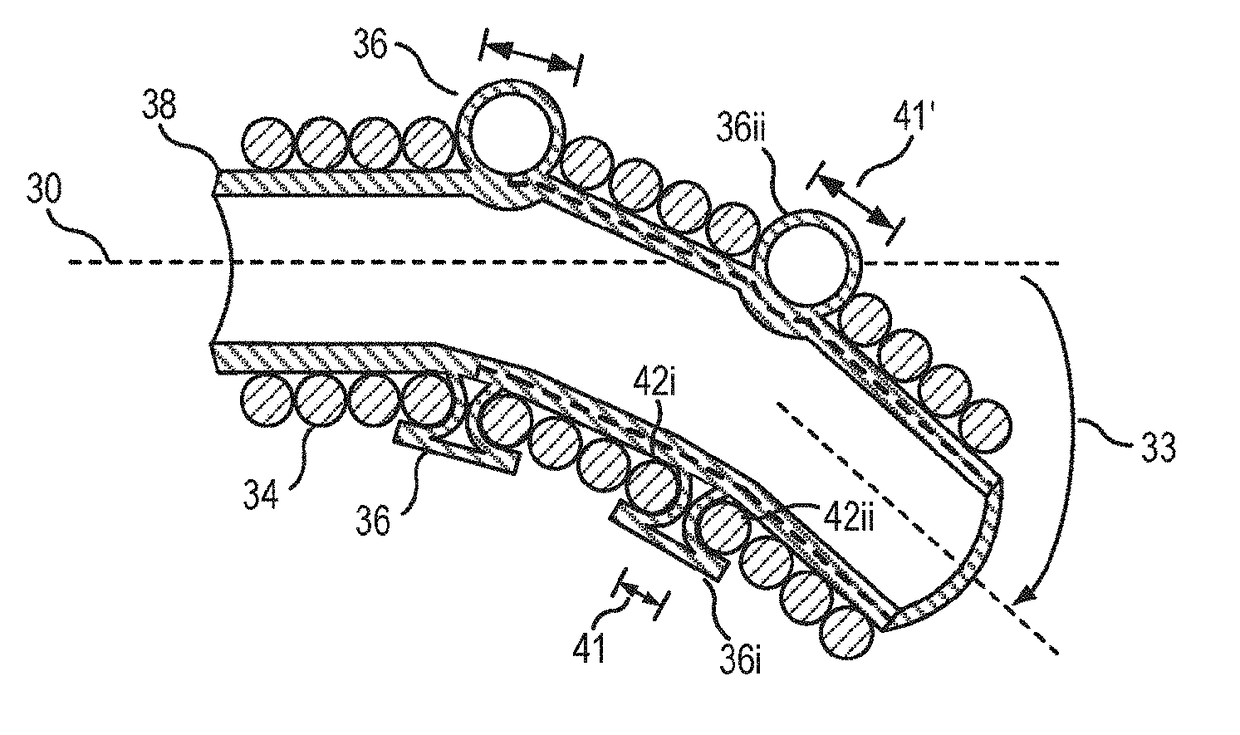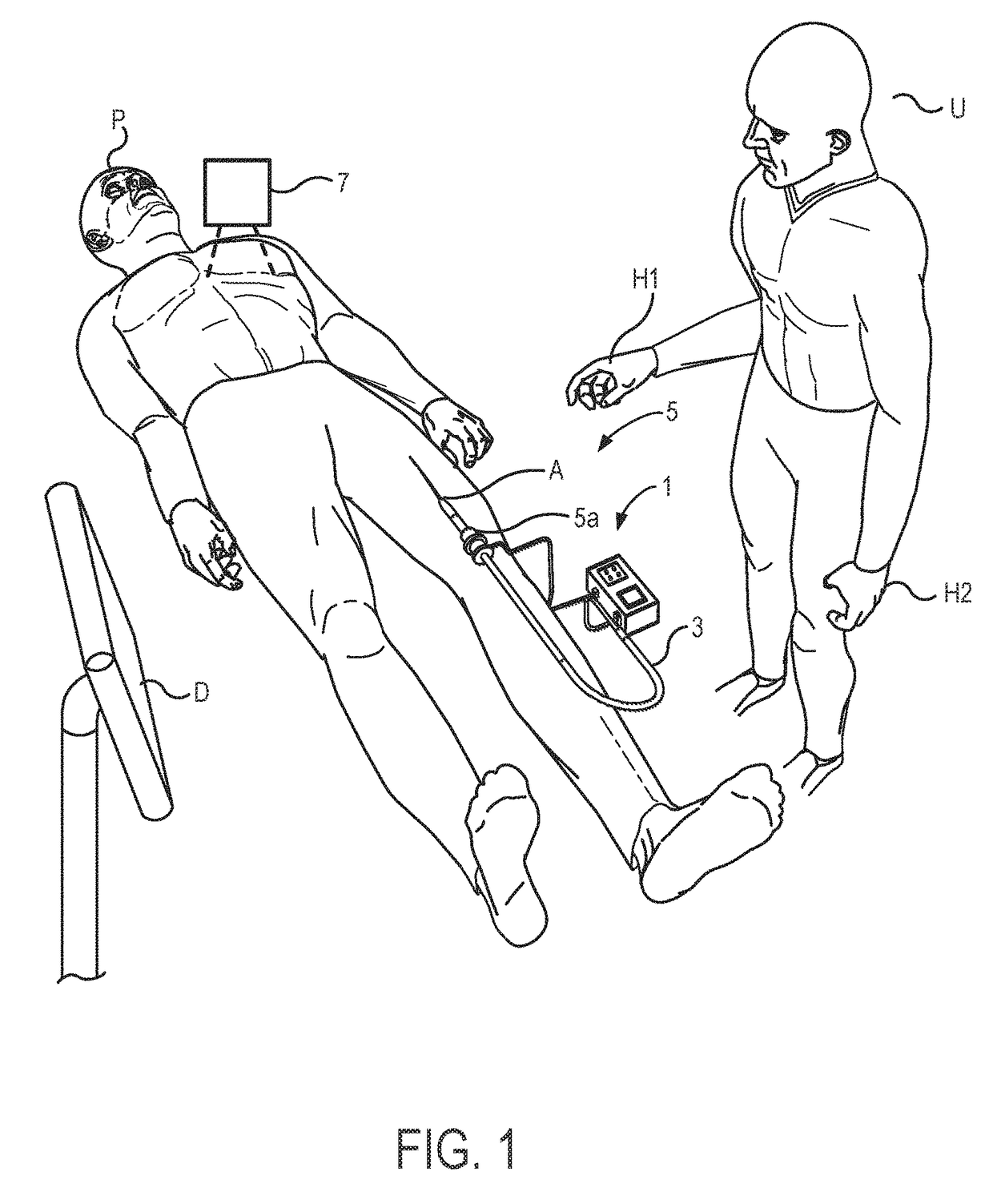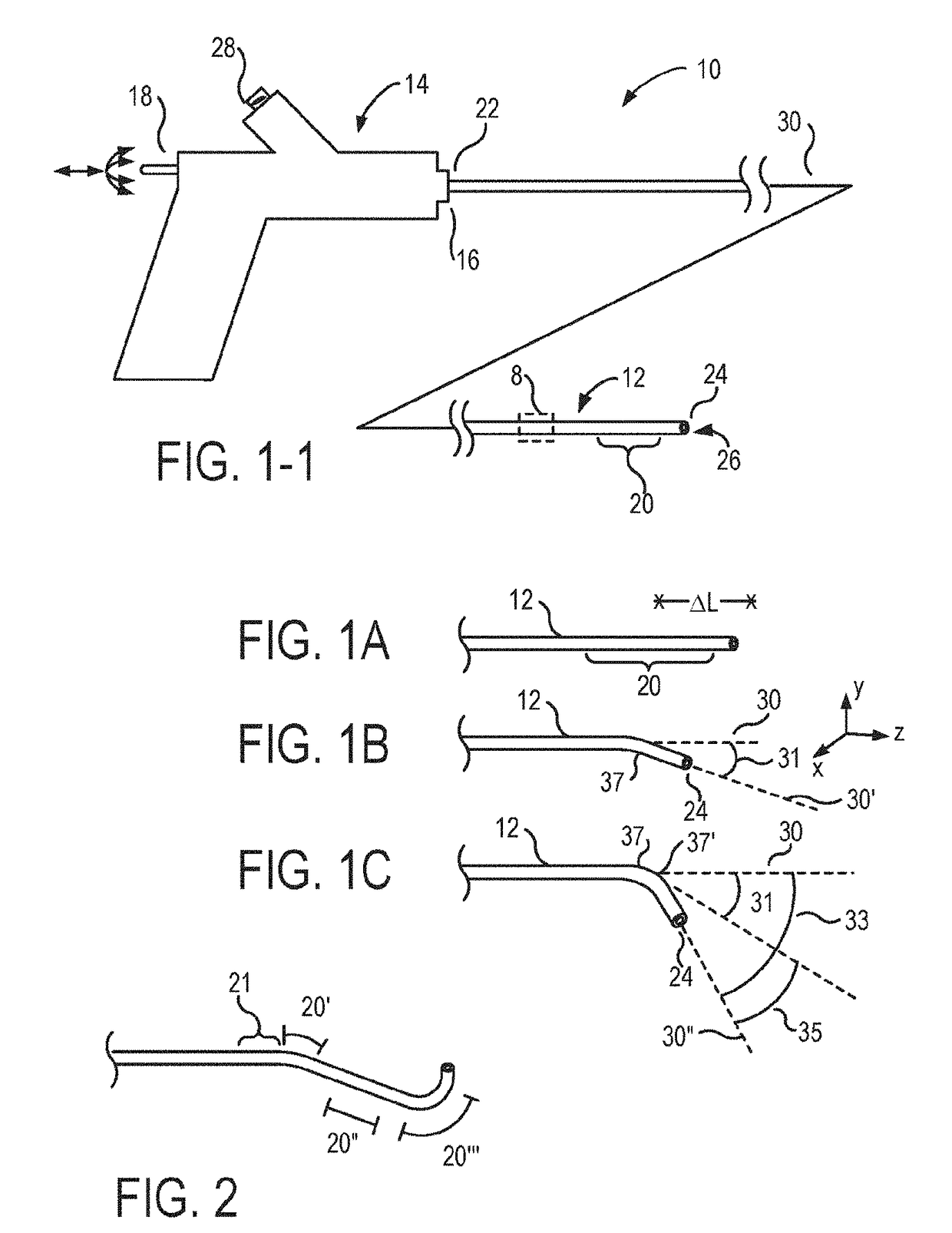Fluid-actuated sheath displacement and articulation behavior improving systems, devices, and methods for catheters, continuum manipulators, and other uses
a technology of fluid-actuated sheaths and articulation, which is applied in the field of fluid-actuated sheath displacement and articulation behavior improvement systems, devices and methods for catheters, continuum manipulators, other uses, can solve the problems of collateral tissue trauma, serious damage to patients' health, and serious pain to patients, so as to improve the behavior of flexible and/or articulated structures, improve articulation, and simple balloon arrays
- Summary
- Abstract
- Description
- Claims
- Application Information
AI Technical Summary
Benefits of technology
Problems solved by technology
Method used
Image
Examples
Embodiment Construction
[0083]The present invention generally provides fluid control devices, systems, and methods that are particularly useful for articulating catheters and other elongate flexible structures. In exemplary embodiments the invention provides a modular manifold architecture that includes plate-mounted valves to facilitate fluid communication along a plurality of fluid channels included in one or more multi-lumen shafts, often for articulating actuators of a catheter. Preferred actuators include balloons or other fluid-expandable bodies, and the modular manifold assemblies are particularly well suited for independently controlling a relatively large number of fluid pressures and / or flows. The individual plate modules may include valves that control fluid supplied to a catheter or other device, and / or fluid exhausted from the catheter or other device. A receptacle extending across a stack of such modules can receive a fluid flow interface having a large number of individual fluid coupling por...
PUM
 Login to View More
Login to View More Abstract
Description
Claims
Application Information
 Login to View More
Login to View More - R&D
- Intellectual Property
- Life Sciences
- Materials
- Tech Scout
- Unparalleled Data Quality
- Higher Quality Content
- 60% Fewer Hallucinations
Browse by: Latest US Patents, China's latest patents, Technical Efficacy Thesaurus, Application Domain, Technology Topic, Popular Technical Reports.
© 2025 PatSnap. All rights reserved.Legal|Privacy policy|Modern Slavery Act Transparency Statement|Sitemap|About US| Contact US: help@patsnap.com



